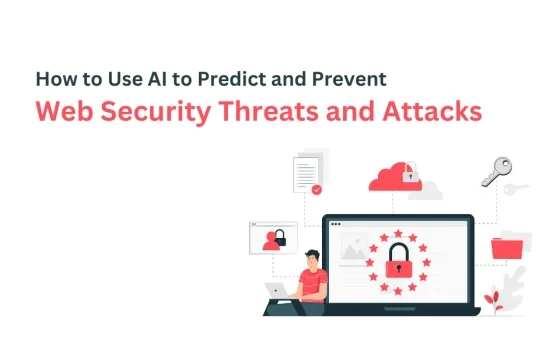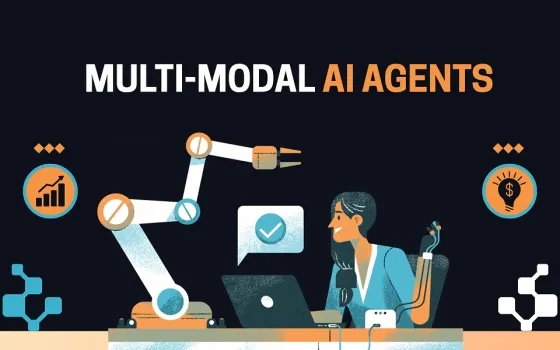Web security is one of the most important aspects of web development, as it protects the data and privacy of both the users and the web applications. However, web security threats are constantly evolving and becoming more sophisticated, posing a challenge for web developers and security experts.
Some of the common web security threats include:
• SQL injection: This occurs when an attacker inserts malicious SQL code into a web application's database query, which can result in data theft, corruption, or deletion.
• Cross-site scripting (XSS): This occurs when an attacker injects malicious JavaScript code into a web page, which can execute in the browser of the user and perform unwanted actions, such as stealing cookies, redirecting to malicious sites, or displaying fake content.
• Distributed denial-of-service (DDoS): This occurs when an attacker floods a web server with a large number of requests, which can overwhelm the server and make it unavailable for legitimate users.
• Malware: This refers to any malicious software that can infect a web server or a user's device, such as viruses, worms, trojans, ransomware, spyware, etc. Malware can cause various damages, such as deleting or encrypting files, stealing data, spying on user activity, or hijacking the device for malicious purposes.
These are just some examples of the web security threats that web developers and security experts have to deal with on a daily basis. However, traditional methods of web security, such as firewalls, antivirus software, encryption, authentication, etc., may not be enough to cope with the increasing complexity and diversity of web security threats. This is where AI can play a vital role in enhancing web security and providing a proactive and adaptive defense against web security threats and attacks.
AI, or artificial intelligence, is the branch of computer science that deals with creating machines or systems that can perform tasks that normally require human intelligence, such as learning, reasoning, decision making, etc. AI can be applied to various domains and fields, such as healthcare, education, entertainment, etc. One of the domains that can benefit from AI is web security, as AI can help to predict and prevent web security threats and attacks in various ways, such as:
• AI can help to detect and identify web security threats and attacks by analyzing large amounts of data from various sources, such as web logs, network traffic, user behavior, etc. AI can use techniques such as machine learning, deep learning, natural language processing, computer vision, etc., to learn from the data and recognize patterns, anomalies, and malicious activities. For example, AI can use machine learning to classify web requests as benign or malicious, based on the features and parameters of the requests. AI can also use deep learning to detect malware by analyzing the binary code and the behavior of the software. AI can also use natural language processing to analyze the content and context of the web pages and the user input, and detect any malicious or suspicious elements. AI can also use computer vision to analyze the images and videos on the web, and detect any hidden or embedded malware or malicious code.
• AI can help to prevent and mitigate web security threats and attacks by taking appropriate actions based on the detection and identification of the threats and attacks. AI can use techniques such as reinforcement learning, neural networks, genetic algorithms, etc., to learn from the feedback and the outcomes of the actions, and optimize the actions for the best results. For example, AI can use reinforcement learning to learn the optimal policy for blocking or allowing web requests, based on the reward and penalty of the actions. AI can also use neural networks to generate and update the rules and signatures for the web security systems, based on the new and emerging web security threats and attacks. AI can also use genetic algorithms to evolve and improve the web security systems, based on the fitness and performance of the systems.
• AI can help to predict and anticipate web security threats and attacks by using techniques such as data mining, predictive analytics, forecasting, etc., to analyze the historical and current data, and extract insights and trends that can indicate the likelihood and the impact of the web security threats and attacks. For example, AI can use data mining to discover the correlations and associations between the web security threats and attacks and the various factors, such as the time, the location, the source, the target, the type, etc. AI can also use predictive analytics to estimate the probability and the severity of the web security threats and attacks, based on the data and the models. AI can also use forecasting to project the future scenarios and outcomes of the web security threats and attacks, based on the data and the trends.
These are some of the ways that AI can help to predict and prevent web security threats and attacks, and enhance the web security and the web development. However, AI is not a silver bullet, and it also has its own limitations and challenges, such as:
• It can be vulnerable to adversarial attacks, which are attacks that aim to fool or manipulate the AI systems by exploiting their weaknesses or limitations. For example, an attacker can use adversarial examples, which are inputs that are slightly modified to cause the AI systems to make incorrect or misleading predictions or decisions. An attacker can also use poisoning attacks, which are attacks that inject malicious data into the training or testing data of the AI systems, to degrade their performance or functionality.
• AI can be biased or unethical, which can affect the fairness and the trustworthiness of the AI systems. For example, an AI system can be biased if it reflects or amplifies the existing biases or prejudices in the data or the algorithms, such as racial, gender, or cultural biases. An AI system can also be unethical if it violates the moral or legal principles or norms, such as privacy, transparency, accountability, etc.
• AI can be complex or opaque, which can affect the explainability and the interpretability of the AI systems. For example, an AI system can be complex if it involves multiple layers or components that interact in nonlinear or unpredictable ways. An AI system can also be opaque if it does not provide any information or justification for its predictions or decisions, such as the black-box models.
These are some of the limitations and challenges that AI faces in the domain of web security, and they require further research and development to overcome them. However, despite these limitations and challenges, AI has a great potential and promise to improve the web security and the web development, and to provide a better and safer web experience for both the users and the web applications.
Therefore, if you are interested in web security and web development, and you want to leverage the power and the benefits of AI, you may want to hire AI developer who have the skills and the expertise to design and implement AI solutions for web security and web development. You may also want to consider custom software development, which can provide you with tailor-made and customized AI solutions that suit your specific needs and requirements. You may also want to explore the various AI/ML development platforms and tools that are available in the market, which can help you to create and deploy AI solutions for web security and web development with ease and convenience.
AI is the future of web security and web development, and it can help you to predict and prevent web security threats and attacks, and to enhance your web security and your web development. However, AI is also a complex and a dynamic field, and it requires constant learning and updating to keep up with the latest trends and developments. Therefore, if you want to use AI for web security and web development, you need to be aware of the opportunities and the challenges that AI offers, and you need to be ready to adapt and innovate with AI.
























